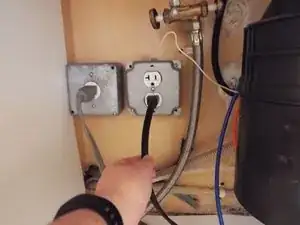
How to Fix a Leaking Garbage Disposal at Flange
These are some common tools used to work on this device. You might not need every tool for every procedure.
An in-sink unit for the disposal of food waste, also known as a waste disposal unit or a garburator. Designed to grind and shred food waste into small particles, allowing them to be washed down the drain along with water.
When the food is placed into the hopper and the disposer is running, the centrifugal force throws the food waste outward against the cutting edges of the shredder ring. The pivoting impeller arms, attached to the flywheel, push the food waste around and into the teeth of the shredder ring. As the food waste is pushed against and cut by the shredder ring, water running into the hopper flushes the ground food waste between the flywheel and the shredder ring, washing it into the drain housing assembly, where it is expelled into the drain.
A garbage disposal is a cylindrical-shaped device, typically made of metal or hard plastic.
The top of the garbage disposal is connected to the sink's drain while the side or bottom of the unit connects to the drainpipe. On the bottom or side of the unit, there may be a reset button used to reset the motor if it overheats or is stuck. Some models also have a hex key slot (Allen wrench slot) at the bottom center, which is used to manually rotate the motor to free a jam.
When installed under the sink, the garbage disposal connects to an electrical outlet with a power cord, or it may be hardwired into the electrical system.
Safety First! Before you begin any repair, remember that safety is paramount. Always disconnect your garbage disposal from the power source before attempting any repairs or diagnostics. This precaution is crucial to prevent electric shock or damage to your appliance as well as personal injury. These precautions should also be followed: